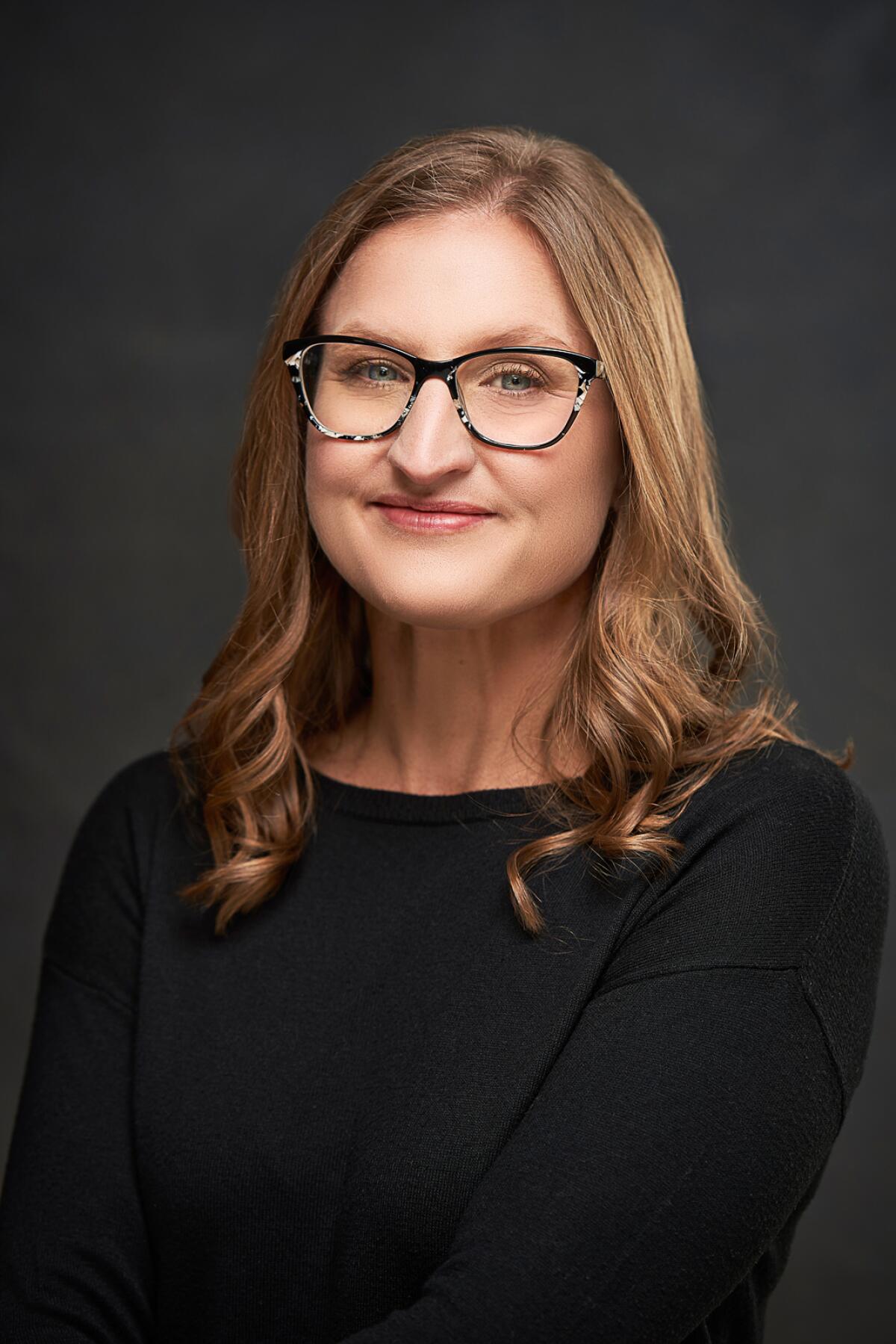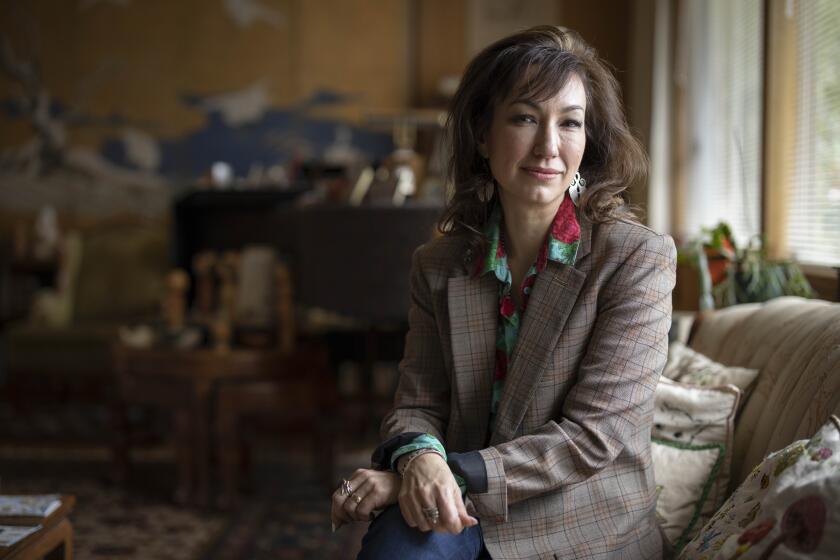Review: What happens when the West doesn’t love you back

On the Shelf
Site Fidelity
By Claire Boyles
Norton: 208 pages, $26
If you buy books linked on our site, The Times may earn a commission from Bookshop.org, whose fees support independent bookstores.
For the people in Claire Boyles’ debut collection of short fiction, “Site Fidelity,” place is destiny. I don’t mean that in any grand sense, but more as fate or habit. Set in Colorado and Nevada, these stories find traction among the forgotten towns and overlooked lives of the rural West; they are populated by those who stayed behind or those who came back after trouble found them in the world.
One such character is Bobby, whose middle-class existence, supported by a “job as lead mechanic at the Saturn dealership,” collapses when he is fired during the Great Recession, forcing him and his wife to move into an abandoned sugar mill. Another is Norah, an ornithologist working in California, who returns to sell the family ranch after her father suffers a stroke.
The loss that each experiences is personal but also social and environmental; in “Site Fidelity,” the landscape itself is often up for grabs. Fracking, flooding, the decimation of native species all play a part in Boyles’ stories and in the lives she portrays. In the face of these potential devastations, what’s to come is less a matter of promise than resignation.
“When examined with any honesty,” a young wife named Mano reflects, “all future indicators were bleak.” It’s 1986 and her marriage is failing; she is staying with her sister, Ruth. “Listen, Mano,” Ruth cautions, “the only good I got from my marriage was the kids, but divorce hasn’t exactly been a picnic, either. Just be sure you know what you’re hoping for, okay?”
That balance between hope — or acceptance — and forbearance factors into all 10 stories in the collection, which offer an unrelenting clarity. These are characters who don’t deceive themselves, even as they try to see the good, or at least the tolerable, in what they have.
“Not a looker, but he sticks close by, so he’ll do,” Gracie, a chicken farmer, observes of her boyfriend, Jerry, a few pages before he gets into an inadvertent shootout with Smith, her ex. Smith is an agricultural agent, which makes him a “turncoat” in Gracie’s estimation, but that doesn’t mean she doesn’t still have feelings, as we learn once the violence ends.
A new collection from author of dark tales Todd Golberg trades urban L.A. noir for the more sprawling menace of the Inland Empire and other exurbs.
“Tears prickled the back of my eyes as I walked away from Jerry,” she confesses. “I know I’m not the person I wish I was because even though me and Jerry had been together for a couple years, and even though he was always real nice to me and I cared about him a lot, I was happy it was Smith already in the truck.”
This is the real stuff, adulthood at its most complex, in which we often find ourselves complicit even when we’re not at fault. Boyles makes the point explicit by linking several of these stories in a pair of overlapping cycles, one involving Mano and her sisters and a second built around Bobby’s community. It’s a strong decision, grounding the book within its landscape and making the stories bigger, more connected, than they might appear on their own.

The sister stories, for instance — there are four — unfold over half a century; we watch as Mano and Ruth, along with their other sibling, Sister, a Catholic nun, make accommodation with the losses life accrues. “I don’t know who you are exactly, … but I love you,” Ruth tells her son Charley in “Lost Gun, $1000 Reward, No Questions,” the last of this quartet of narratives, which takes place in 2016.
Ruth is suffering from dementia, still seeking some sort of purchase on the world. We can’t help recalling her younger self, a single mother “exhausted by the relentless efforts of piloting her own life, especially now that she had so many passengers.” After all this time and even in this state, her commitments and devotion continue to define her.
In that regard, Ruth is reminiscent of many characters in “Site Fidelity,” diminished but still themselves. These include her sister the nun, knees inflamed from 50 years of genuflection, reconfiguring her faith through the lens of environmental activism; and Norah’s father, whose stroke “stole a lot of things from him that I miss too, some more precious than his ability to manage cattle — verbs, for example, and with them anything resembling sentences.”
Something similar might be said of their younger counterparts — Bobby, trying to reconcile his straitened circumstances, or Gracie, “aching for freedom that seeps ever away, watching liberty puddle outside itself.”
Marie Mutsuki Mockett’s ‘American Harvest’ looks at the divide between the heartland and those who seldom think about where our food comes from.
That none of this will be resolved should go without saying. Life is open-ended until it stops. Boyles weaves such knowledge deep into her narratives, choosing to end many of them in the middle, in the moment just before the trouble starts. It is a deft and daring choice.
When at the end of “Sister Mary Agnes in the Spring of 2012” — how I love that utilitarian title — the nun chains herself to equipment at a fracking site, it is not because she imagines she will play the heroine, but because she knows she cannot. “She imagines her feet supported by moonlight,” Boyles writes, “the prick of feathers growing through the skin on her back. Sister gathers her wits. She wills herself to remain visible.” In the next moment, a truck will reach her and her quixotic protest will be over. Still, the story finishes before that happens, leaving us with not hope, exactly, but a sense of the moment — and the gesture.
The questions Boyles raises are universal. How much do we matter? What is a single lifetime worth? She doesn’t sugarcoat the answers; the communities in “Site Fidelity” face problems that are intractable and growing worse. All the same, she wants us to consider: What else do we have?
The collection’s title refers to the tendency of animals to come back to or remain in the places they were born. We see this most in migratory species, such as birds and humans. It is, Boyles admits, “a beautiful, romantic idea, but it’s also dangerous.” By way of illustration, she describes the failure of a flock of sage grouse to find a breeding ground that has been flooded, and the diminishing numbers that return each year until the “entire family just died out, pining for their land.”
A metaphor? Sure, but Boyles has something more contradictory in mind. The landscapes that define us will also destroy us. How could it be any other way? Perhaps, “Site Fidelity” insists, the only option is to give oneself over to it. “Temporary relief, false,” Boyles acknowledges, “but relief all the same.”
In “The Cold Millions,” the novelist takes on proletarian lit, and honors his hometown, in the story of labor activists in early 20th century Spokane, Washington.
Ulin is a former books editor and critic at The Times.
More to Read
Sign up for our Book Club newsletter
Get the latest news, events and more from the Los Angeles Times Book Club, and help us get L.A. reading and talking.
You may occasionally receive promotional content from the Los Angeles Times.









